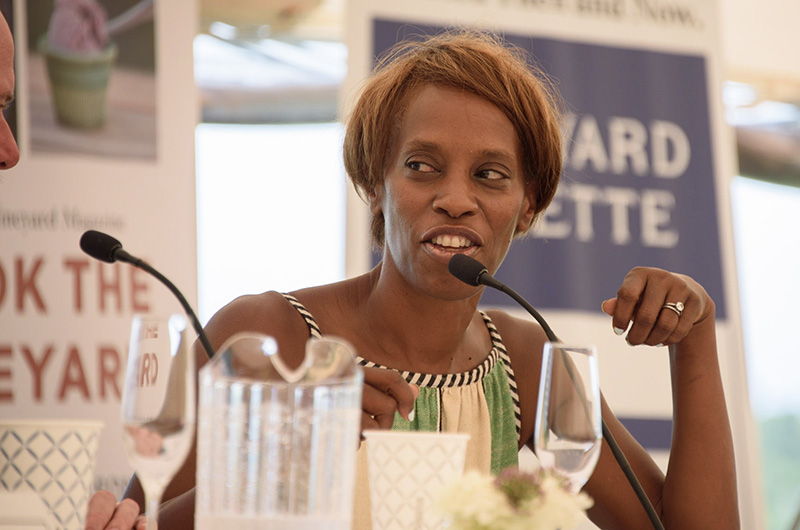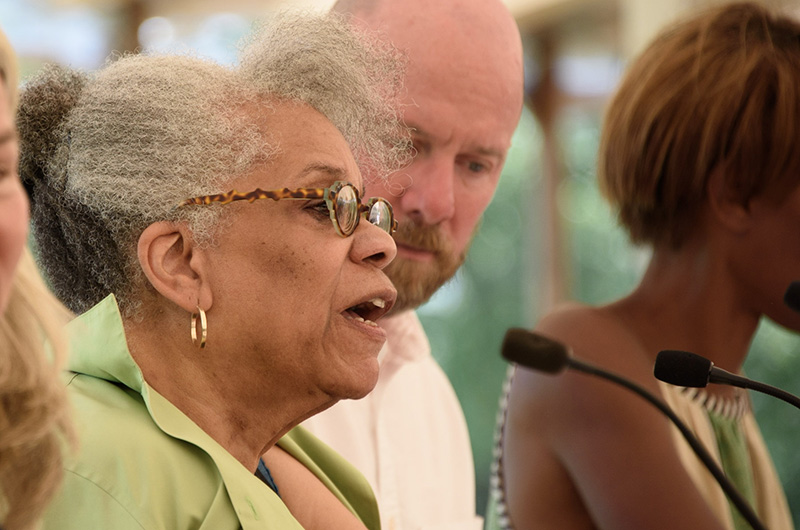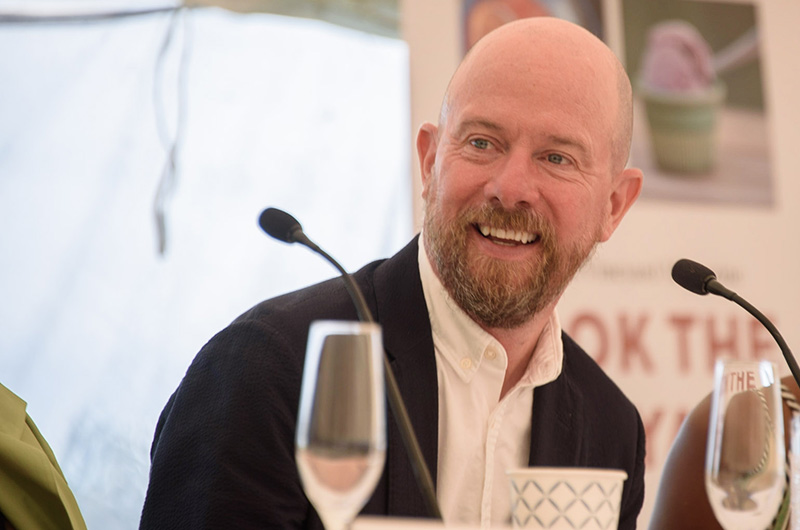American cuisine is being redefined both by new voices and by a new acknowledgment of the many unheralded historical influences on what we cook and eat, according to an all-star panel of food writers who gathered Wednesday for a noontime forum at the Martha’s Vineyard Museum.
A sell-out crowd of more than 200 people took their seats at café-style tables under a spacious tent to hear culinary historian Dr. Jessica B. Harris, New York Times food editor Sam Sifton and Bon Appetit magazine editor-in-chief Dawn Davis talk about the Changing Story of American Home Cooking.
The event was moderated by Susie Middleton, founding editor of Cook the Vineyard, which sponsored the event along with its sister publication, the Vineyard Gazette. Much of the discussion focused on 21st-century moves toward diversity in kitchens and cooking media.
“Having African-American writers, or having other writers — let’s not just say African-Americans — expanding the canon . . . brings things in another way,” said Ms. Harris, who was honored by a toast at the close of the event for her James Beard Lifetime Achievement Award, recognizing her extensive work on food cultures of the African diaspora.
Attendees were treated to a box lunch following the toast created by Gina Stanley, owner of the Art Cliff Diner, with a menu inspired by Ms. Harris.
The author of more than a dozen books, Ms. Harris also is in the James Beard Foundation’s Cookbook Hall of Fame, even though — as she told an appreciative audience more than once — “I hate recipes.”
Both Ms. Davis and Mr. Sifton agreed that the field of food writing is opening up to a wider range of voices, leading to more representation and authenticity.
“The ability to have a big, inclusive department with a big, diverse staff, and allow them to pursue their passions wherever they lead, is really exciting and, I think, makes for good journalism,” said Mr. Sifton.
Ms. Davis was hired last year with a mandate to bring diversity to Bon Appetit after a crisis over the Condé Nast magazine’s workplace culture. Changes behind the scenes have led to new recipes and features for the magazine, she said.
“I have a really diverse test kitchen, I have a diverse slate of editors; they come from different backgrounds, in terms of their family makeup; and so they’re throwing all kinds of things into the mix,” Ms. Davis said.
And race and family background are only part of that mix, she told the audience.
“When we talk about diversity, I think it’s also important to talk about culinary profile,” Ms. Davis said.
“We also have people on staff who don’t eat meat, per se, and so they’re going to bring a different perspective into what we consider,” she said, noting that the magazine’s August issue spotlights vegetables.
Mr. Sifton is also eyeing the vegetarian audience, with a New York Times Cooking newsletter just for veggie cuisine launching next week.
“I think there is a vast audience for that,” he said. “I hear about it in my in-box all the time.”
The NYT Cooking newsletters represent another kind of diversity: With blogs, podcasts, websites, TV and videos, readers no longer need to get their food news and recipes from newspapers and magazines.
“Some people who access us through YouTube had no idea we had a print publication,” Ms. Davis said.
Ms. Harris herself has a podcast, My Welcome Table. A longtime English professor at Queens College in New York city, she also is developing a new curriculum for the prestigious Culinary Institute of America — though she lamented the disappearance of the traditional route to mastery through apprenticeships with chefs.
“That inroad path has changed, so that people now feel they’ve got to go to culinary school,” she said.
“That path — ‘I’ve got to have a culinary degree to do this’ — is probably something else that needs changing.”
Ms. Harris also said opportunities that she began her career writing for Essence and Black Enterprise
Featured in the recent Netflix feature High on the Hog, Ms. Harris writes columns for three different publications and is at work on a new book titled Braided Heritage, tracing the disparate food traditions that have entwined to create the cuisine Americans eat.
Still, she noted, when she started writing the only outlets for her work were magazines like Essence and Black Enterprise.
“I wrote for all the African American media,” she said. “That was where you got started if you were an African American author, period.”









Comments
Comment policy »